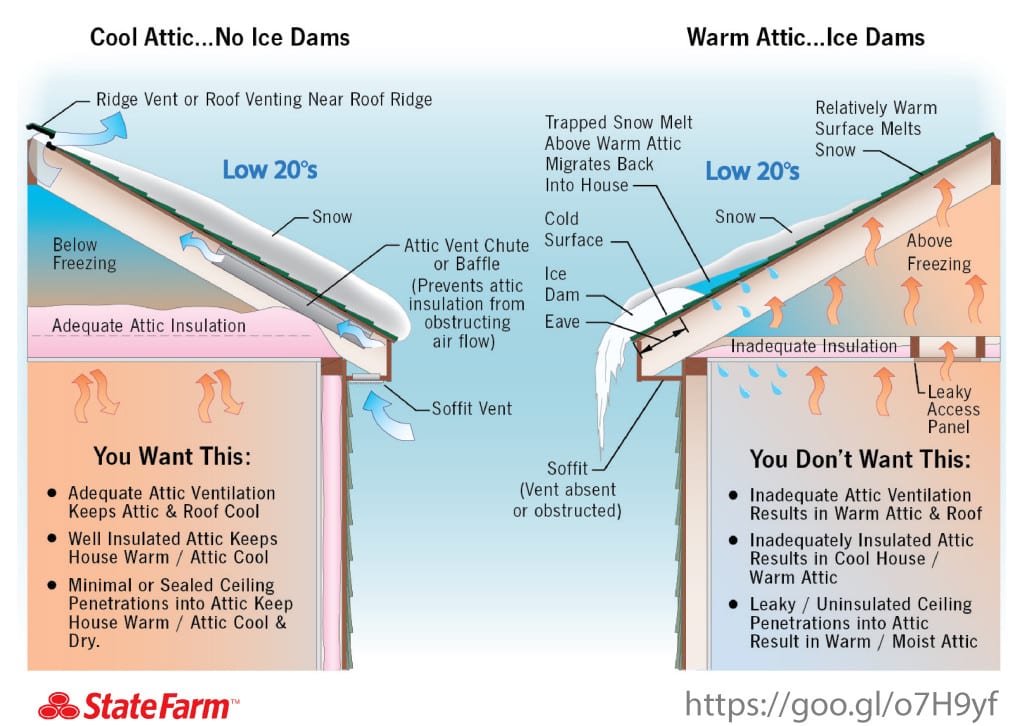Ice Dam is turning to be a yearly issue in winter for most residential and commercial properties around Vail, Breckenridge, Aspen and surrounding mountain communities in Colorado. This consistent problem in the same homes or business can be resolved if some attention is given to solve this sometime during the year. It is always harder to deal with in winter and most of the time the solution in winter is not a permanent fix because what tend to get done is mostly a band-aid solution instead of a permanent one.
Various methods can be taken to solve Ice damming:
In new construction, this could be prevented from the start through proper design at the very start with adequate insulation and ventilation. Roofs in homes and commercial properties may allow the addition of insulation and mechanically installed ventilation. Checking on similar homes being built in the same area will allow you to compare homes if the ice dam issues exist. Getting some feedback from neighbors will help in how they have address those issues since you may not see ice damming in their homes. Have they done anything to change ice damming in their homes?
Typically, research has proven into ice damming conditions takes place when the attic temperature is above 30 °F (−1 °C) and when outdoor air temperature is lower than 22 °F (−6 °C).
Attic and roof temperatures can be monitored and controlled by sufficient installation of insulation. Having natural or mechanical installed ventilation may produce a “cold roof” that keeps roof temperatures around or below the 30 °F (−1 °C). This solution will mostly take care of all future issues that may cause ice damming.
When you have a pile of snow on your roof, using a special roof rake, all snow from the roof must be removed by shoveling. Partial shoveling may cause ice dam to form at the same location they snow is left as the meltwater will freeze when it hits the freezing point. Roofs are tall and can be risky. Walking on roof by untrained homeowners can be very dangerous and cause serious fall injuries and roof damage.
Using a roof membrane installed under the roofing material helps and may prevent leakage from ice damming. This however will not prevent the formation of ice dams. Installing heat tapes at the eaves can help melt channels for water to flow through it however, using heat tapes cause wanted energy, and may cause long-term damage to asphalt shingles. The risk of fire exist as well. Even with heat tapes installed, the probability of ice dam forming can happen just above the tape. Heat tapes keeps gutters and downspout from icing.
Ice Dam obviously cause water damage to homes and commercial properties and when the temporary or permanent solution is applied to the situation calling a restoration company to dry wet materials is very necessary to prevent secondary damage such as mold in your home. Call SteamMaster to inspect with our IR Camera by calling us at 970-827-5555.

